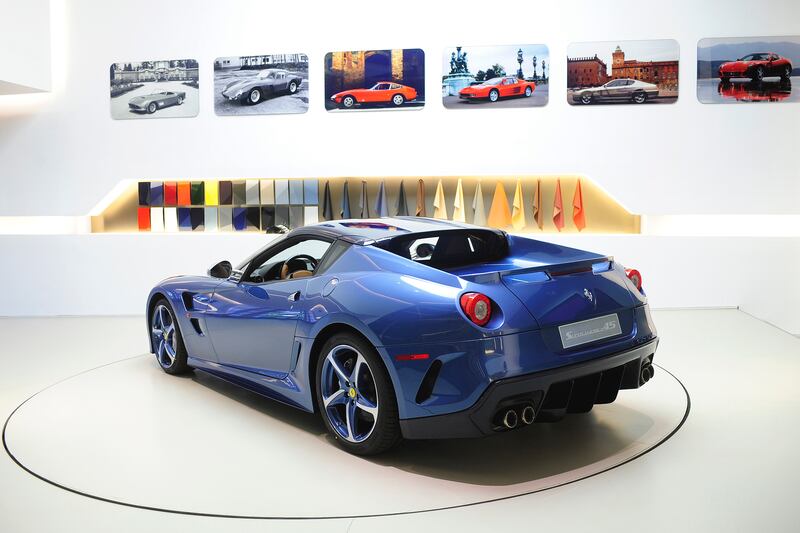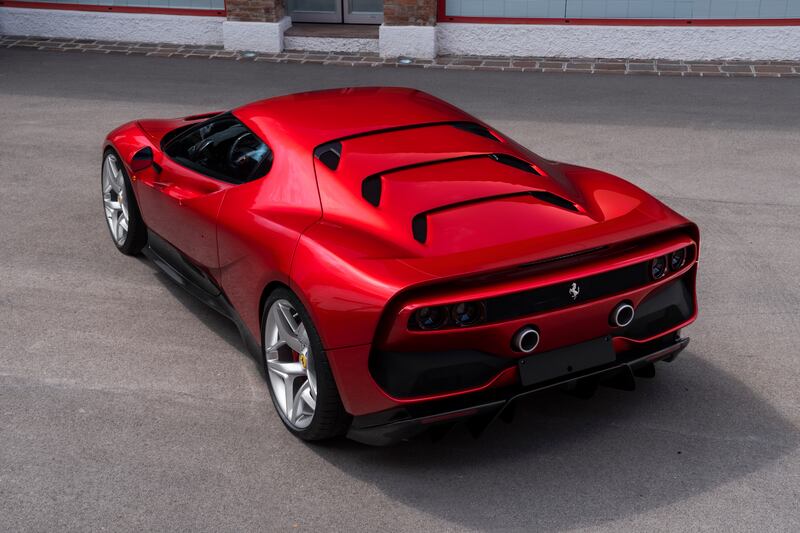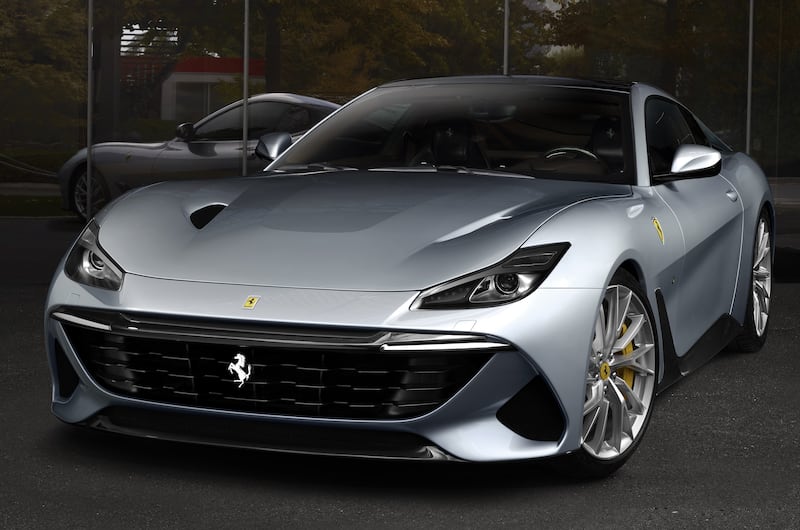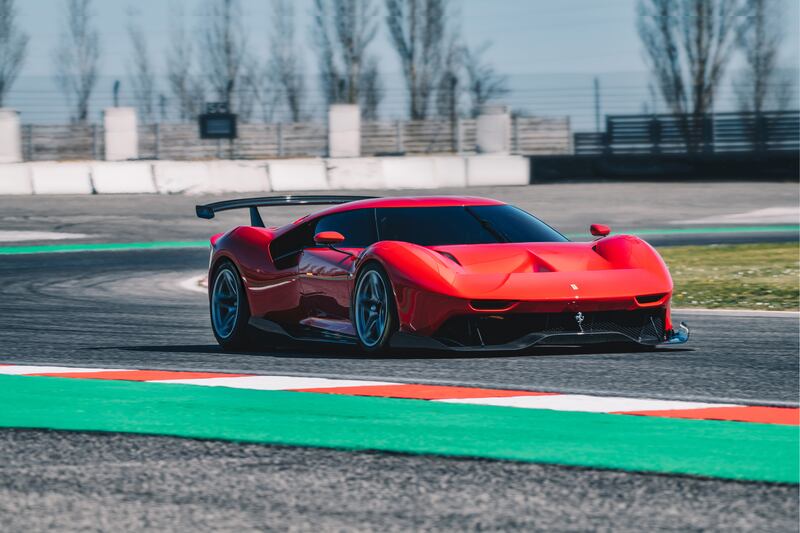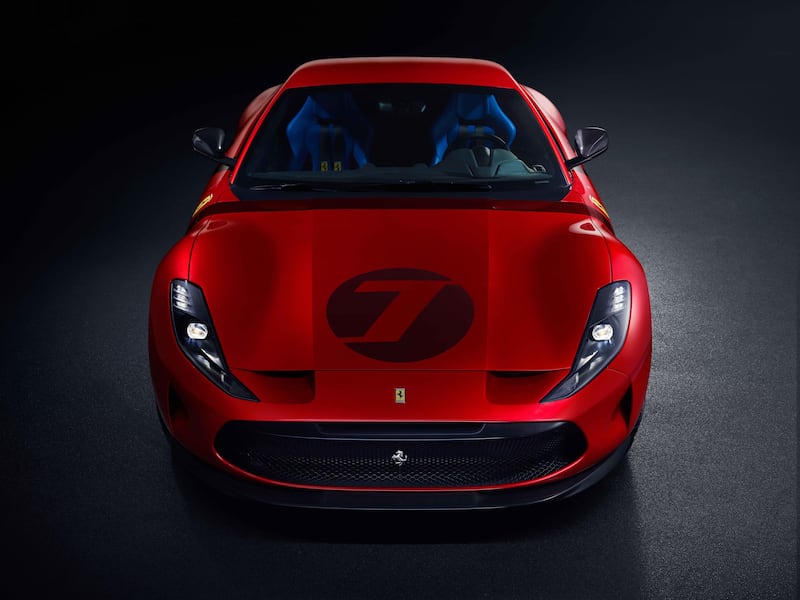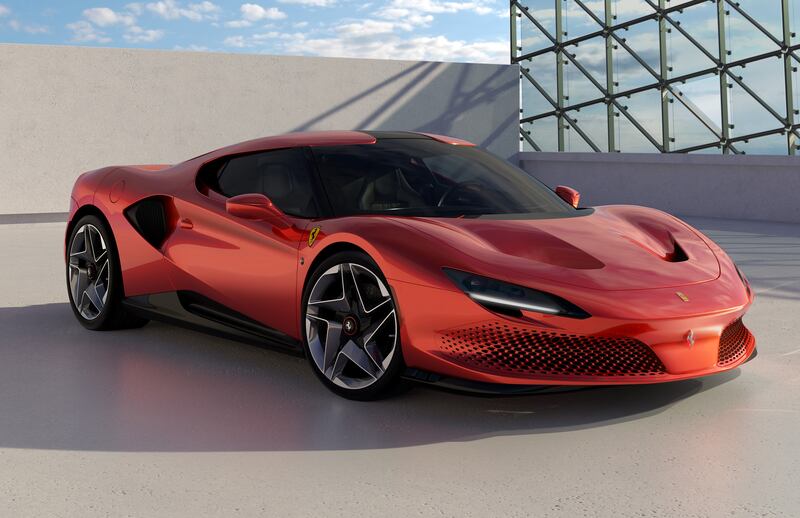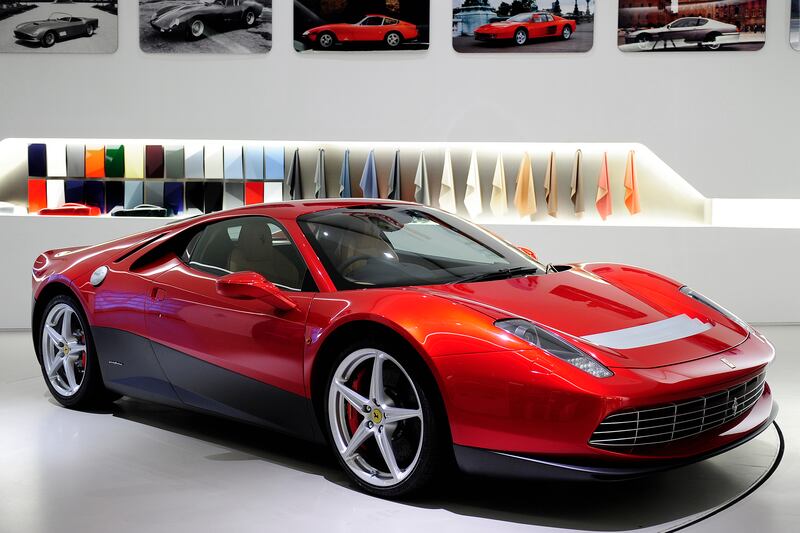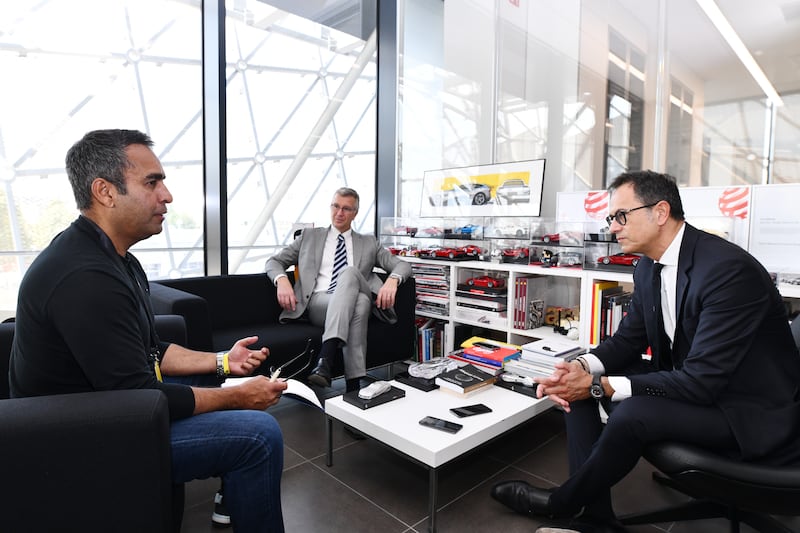High levels of personalisation and bespoke tailoring of trim materials and colours are not uncommon in the domain of ultra-premium cars. However, Ferrari has elevated itself from the horde by reviving the rich tradition of one-off coachbuilding that existed before and just after the Second World War.
Custom coachbuilding was the norm in the early days of Ferrari. Clients would open discussions with the factory about their preferred chassis and engine, then choose an Italian styling house to create the bodywork.
It was to revive the spirit of these one-off cars that Ferrari created the Special Projects division, enabling a small number of the brand’s VVIP customers to create their fantasy Ferrari.
“Special Projects is the top of the pyramid, when it comes to personalisation,” Emanuele Carando, Ferrari’s head of product marketing, tells The National. “Everything starts with a very rough idea that the customer has, and this is then interpreted into a concept by the design team.
“However, everything starts with the customer. It could be an idea that’s inspired by the past or something very futuristic. The premise is to create something that has never existed.”
Six one-off cars created by Ferrari
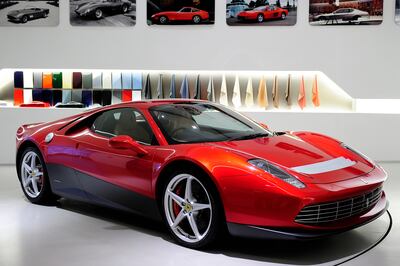
Ferrari SP38: Designed around the chassis and running gear of the 488 GTB, the SP38 reflects “the specific vision of a client with a deep passion for racing”.
The 488 GTB’s twin-turbo format prompted the design team to look to the legendary F40 for stylistic inspiration. As a result, the all-new bodywork, resplendent in a specially conceived three-layer metallic red, has a striking wedge profile. The sinister-looking SP38 is especially distinctive from the rear, thanks to musculature haunches and “Fontana Cut” louvres in lieu of a rear windscreen.
Ferrari Omologata: The Omologata was inspired by everything from Ferrari’s racing heritage to sci-fi and references to modern architecture. The vision was to create a futuristic design, yet without losing a sense of restrained elegance.
To achieve this, the designers unlocked every possible area of freedom from the underlying package of the 812 Superfast, retaining only the windscreen and headlights as bodywork elements. The Omologata’s all-aluminium bodywork features a flattened oval grille, which tapers up to a rounded section over the front wheel arches. The bodywork sweeps back to a rear end featuring a louvred screen and subtle ducktail spoiler.
Ferrari P80/C: The radical P80/C pushed the Special Projects programme into new territory by using a competition car — the 488 GT3 — as its basis. This means it’s liberated from any road car homologation requirements, so headlights are one element that could be discarded.
Its GT3 chassis means the P80/C’s wheelbase is 50 millimetres longer than the standard 488mm, and every gram of excess fat has been trimmed from the car. The P80/C has several design inspirations, including the P4 that broke cover in 1967 at Monza, the 1965 Le Mans 24 Hours-winning 250 LM and the Dino 206 S.
Ferrari SP48 Unica: A pivotal element of the SP48 Unica is the extensive use of 3D prototyping, which enabled Ferrari’s designers and engineers to create a front grille and engine air intakes that seem carved from a solid volume, creating a sense of seamless continuity and dynamic fluidity.
No less eye-catching is the transition from black — which includes the windows, roof and engine cover — to the body colour. The striking visor effect of the glasshouse is enhanced by smaller side windows and the elimination of the rear screen, highlighting the powerful muscularity of the SP48 Unica.
Ferrari BR20: Derived from the wagon-esque GTC4 Lusso, the BR20 sports an altogether sleeker roofline, made possible by ditching the donor car’s rear seats. Stretching 75mm longer than the Lusso, the BR20’s elegant roofline is reminiscent of the 1964 500 Superfast.
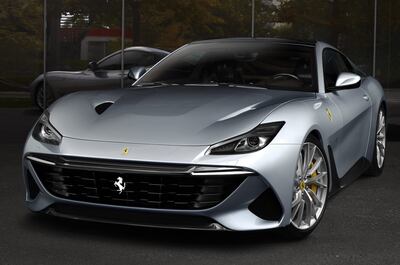
An aerodynamic channel in the rear pillar creates a flying buttress, while the roof is painted black. The roofline culminates in a rear fascia with a diffuser that optimises aero by working with active flaps on the underbody. The BR20’s face is distinguished by angry-looking headlights and a gaping grille topped by a thin carbon fibre “moustache”.
Ferrari SP12 EC: The SP12 EC is one of the best-known Special Projects, partly because its owner is none other than celebrated musician Eric Clapton (hence the EC suffix). Although based on a 458 Italia donor car, the inspiration for the SP12 came from the 512 Berlinetta Boxer. It might have a V8, rather than a flat-12 motor, but the design cues linking the EC to the Boxer are obvious.
What’s particularly impressive is how cleanly and cohesively the bodywork has been reimagined. Clapton’s affinity for the 512 BB stemmed from owning no fewer than three of them over the years.
Pinnacle of exclusivity
Ferrari develops a maximum of two Special Projects cars per year. “In essence, the customer becomes the general manager of the company for the development of that specific car,” says Carando.
“The beauty for the customer is they not only get to own a unique car, but also to participate in the process.”
Fewer than 20 cars have been built to date via this programme. Cost alone rules out all but a fraction of would-be customers, as the bill for creating a one-off Ferrari starts from €5 million ($4.87m) and counting.
It’s not just about having deep pockets, either, as customers need to meet certain criteria to have access to the Special Projects programme.
“You need to be one of our very best customers — with a garage containing several of our GTs and sports cars — to commission a Special Projects car. We only give this opportunity to those who are best able to represent the Ferrari brand worldwide,” says Carando.
The first task is to identify a suitable donor car, which Carando says is always a vehicle part of Ferrari’s current range. This is to ensure “maximum efficiency and satisfy homologation requirements”, in other words, to meet the latest safety and emissions regulations.
Even though one of Ferrari’s mainstream models is used as the basis for each one-off, Carando says: “It’s very likely that when you see a one-off, you’ll find it difficult [identify] the donor car.”
Each Special Projects vehicle is created under the watchful eye of Ferrari design director Flavio Manzoni, who says creating a one-off requires a mix of 3D modelling technology, as well as a high degree of hands-on craftsmanship. “The craftsmanship element is what enables some solutions to be developed on one-off cars that wouldn’t be possible on mainstream models,” says Manzoni.
“So, we try to understand what are the technologies that are applicable to our projects and then incorporate them in a specific one-off model.”
As for when we might see the next Special Projects creation, Carando answers with a smile: “Who knows, but by the end of the year you might have some news …”
